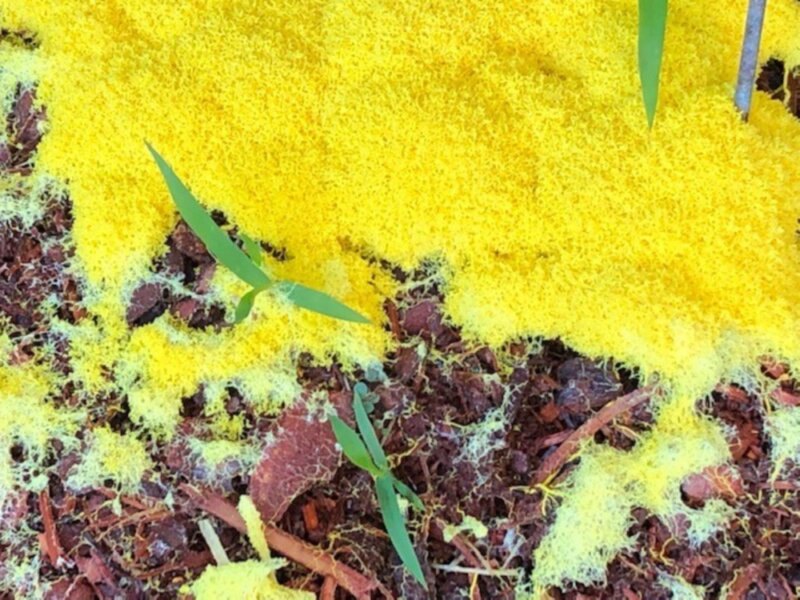Wet weather brings slime mold
With all the recent wet weather, conspicuous neon yellow masses have appeared on bark mulches and lawns. These brightly colored blobs, called plasmodia, are unique organisms called slime molds.

After a stretch of wet weather, bright yellow, foamy masses of “dog vomit” slime mold may appear on bark mulches and lawns.
The harmless, yellow, foamy slime molds (Fuligo septica), often called the dog vomit slime mold, were originally classified as fungi. They are now in the kingdom Protista since they more closely resemble amoeba.
The size of slime molds can vary from a few inches to several feet in diameter. They are not pathogenic to plants although some can grow over plants and briefly decrease their access to sunlight. The plasmodium is the feeding stage of the organism, engulfing bacteria, fungi and other microorganisms as it grows.
The plasmodial stage can appear to “creep” and can move several feet in a day, alarming homeowners and gardeners. However, slime molds are beneficial since they contribute to the decomposition of dead vegetation.
As the bright yellow slime molds age, they fade from bright yellow to a crusty dull tan and release spores that can stay dormant until the next round of rainy weather. No control is necessary for slime molds.
They will disappear as soon as the weather dries. To hasten their breakdown, you can break apart the blob with a rake. For more information, visit the website.
(Ann Hazelrigg is the University of Vermont Extension plant pathologist and director of the Plant Diagnostic Clinic.)
